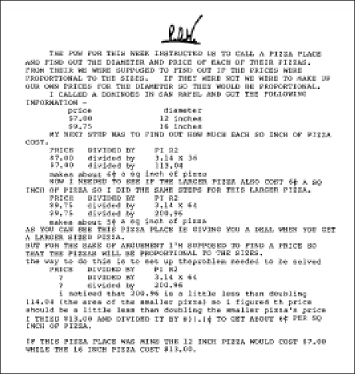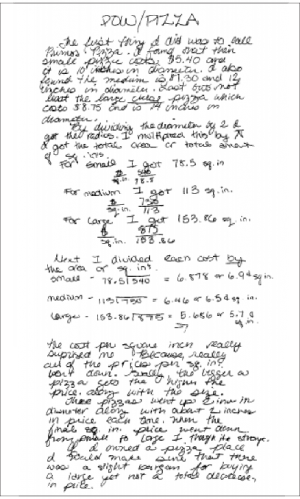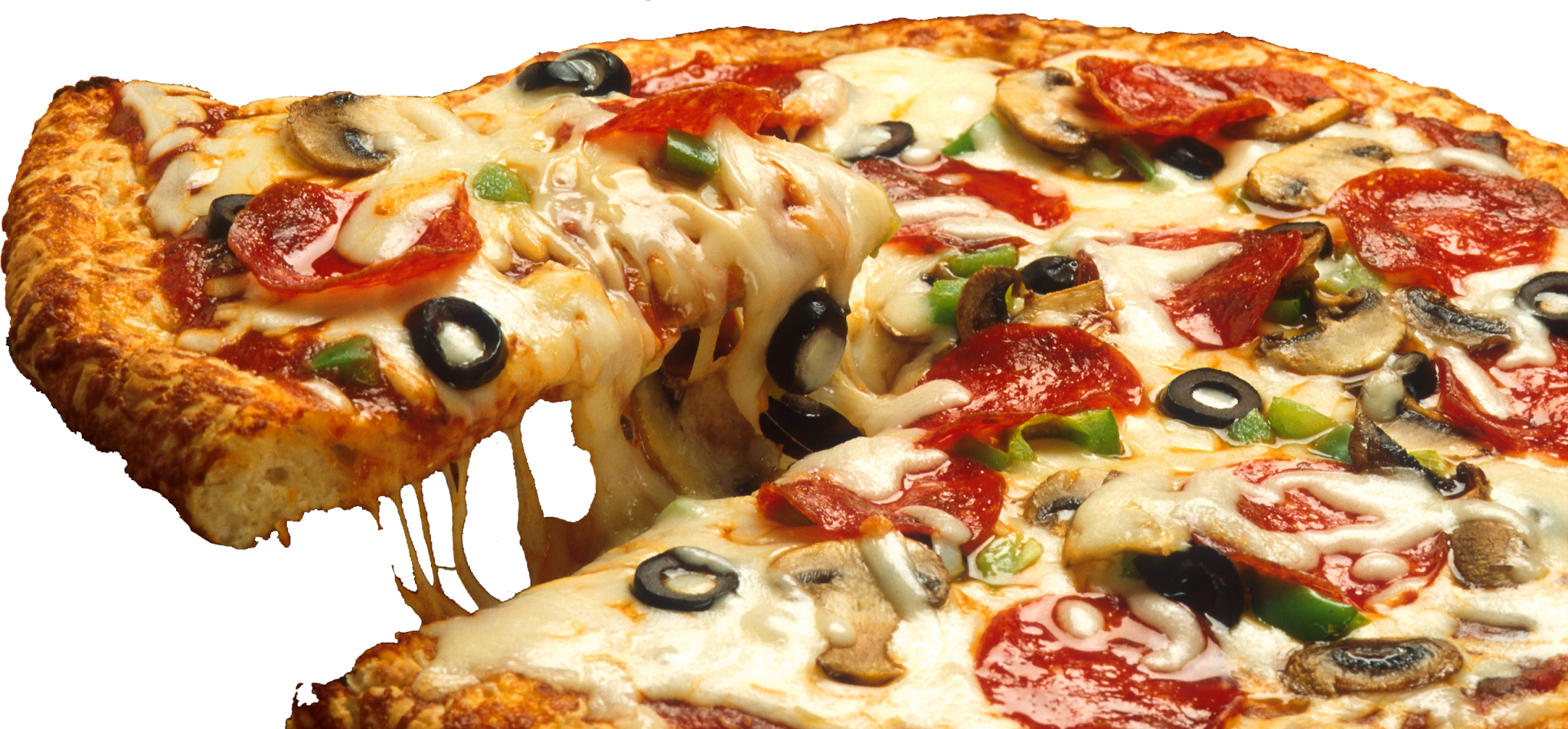The Pizza Problem is a great way to apply mathematical information in a real-world context. Challenge your seventh and eighth graders to apply their understanding of area and order of operations with the pricing of pizza.
When teaching a unit on the area of circles, I asked a class of seventh- and eighth-grade students to investigate the prices of different sizes of pizzas to see if the prices were related to the pizzas’ areas. Their assignment was this:
- Find and call a pizza place
- Figure whether the prices of the pizzas relate to their sizes
- If they do, explain why. If not, explain what the prices would be if they were proportional to their areas
Some responses were….
Amanda wrote: Call up a pizza place & ask the size of each of their pizzas in inches, small, medium, or large. Then ask the prices. See if the prices are proportional to the areas of the pizzas. If they are not, reprice them.
Allison wrote: Call or visit a pizza place. Find out the size and price of pizzas. Then decide whether it’s mathematically sensible or not. How much would you charge?
Geoff wrote: What are the prices of a small, medium, and large pizza? Do they make mathematical sense? If so, why? If not, what should they charge?
Jennifer wrote: What we are supposed to do is to call or visit a pizza place, and find out what the price of each pizza is and what size it is. We then have to decide whether or not the prices are acceptable. If they aren’t, what would we change them to?
The students’ solutions and explanations revealed their understanding not only about the area of circles but also about other mathematical ideas.
Most of the students figured the area of each size pizza in square inches and then figured out, for each size, the cost of one square inch of pizza. In most cases, the larger pizzas were less expensive per square inch. Some students decided the pizzas were well priced; others presented alternative pricing.
Jacob, for example, concluded: The deference in price is minimal when you look at it on a small scale but if you were going to buy fifty thousand square inches of pizza for a big party you were having while you’re parents were away for the weekend then you would have to consider what size pizza would be the most economical.
Mike had a different approach to economizing. He wrote: Skimp on the toppings.
The students’ solutions and explanations revealed their understanding not only about the area of circles but also about other mathematical ideas. The students were interested in the different prices and sizes from different pizza places, and the problem was a good way to relate the mathematics they were learning to the world outside of school.

Figure 1. In her solution, Amanda discovered that the three different sizes of pizza weren’t priced in proportion to their areas, but she didn’t recommend prices.

Figure 2. After analyzing the prices, Jennifer suggested a new price for a 12-inch pizza.
Originally appeared in Marilyn Burns’s Writing in Math Class: A Resource for Grades 2–8.

 All Blog Posts
All Blog Posts
Comments